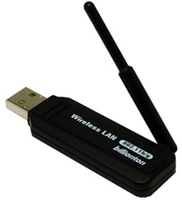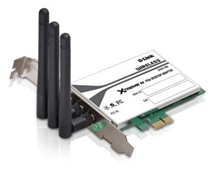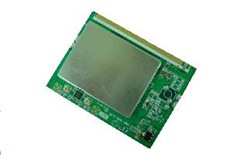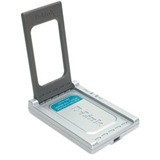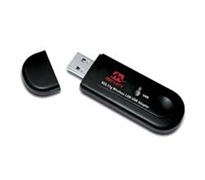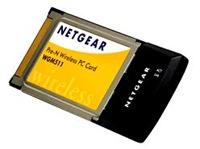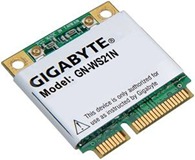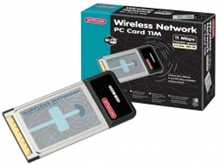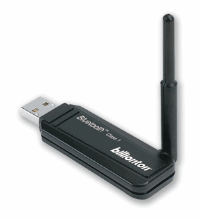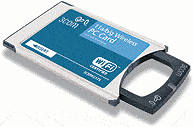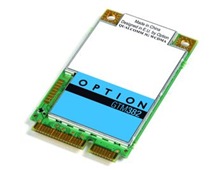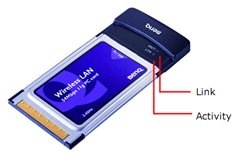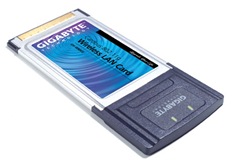| Wireless Driver & Software
NEXT GENERATION WIRELESS CHALLENGES
NEXT GENERATION WIRELESS CHALLENGES: Overcoming Multipath
Often, Wi-Fi transmission is limited by a phenomenon called multipath: In an obstacle-rich environment the signal bounces off the obstacles (for example, brick walls, office furniture, etc.), in the process generating reflected signals which degrades the reception of the signal. At the receiver, the signal loses quality because the obstacles cause the signal path lengths to be unequal, which results in several time-delayed copies of the information signal arriving at the receiver, as depicted in Figure 1. The total signal is the sum of all signals according to their phase relationships; and in general, the received signal is spread out in the time domain.
The receiver is designed to correct signal distortion, but can only do so to within certain limits. For example, if two signal paths are received out of phase, the total signal may cancel out entirely. Places where this happen in a typical user setting, such as a corner room away from the transmitter (AP), are called "dead spots". Wi-Fi users may also experience locations at home where the signal strength is weak, or where dropouts occur intermittently. Performance fluctuations like this are frustrating for the user, and, indeed, unacceptable for future applications that require stable, high throughput connections.
In a home environment, the user may find he can only use a laptop a limited range; while in the workplace several APs may be required to eliminate dead spots and allow wireless access to cover the entire floor. Of course there has been much research and development in recent years to overcome such factors limiting the stability and range of wireless broadband links. Presently, the IEEE standards committee is working on the next generation of the existing IEEE 802.11g standard that will include advanced technologies to enhance performance of broadband wireless LANs.

Figure 1: Multipath phenomena in wireless communication
WIRELESS TECHNOLOGIES FOR ENHANCED PERFORMANCE
The multipath problem is a longstanding issue in wireless communications. To reduce the multipath, the earliest Wi-Fi standard (802.11b) uses a technique called spread spectrum. Using this modulation, the data is spread signal out in the frequency domain to reduce the possibility of destructive interference totally wiping out a connection. This technique is effective, and is still used in current 802.11g modems, but it can provide limited throughput because it uses only a single channel for communication.
Other approaches to improving signal quality involve using multiple receiver antennae. Antenna diversity is method by which the receiver switches between two antennae to select the one with best signal strength, as shown in Figure 2. More advanced versions apply weights to the received signals and combine the two in order to further improve reception. Such methods, sometimes referred to as smart antenna design, are very effective means for combating multipath, particularly if the proper weighting for the received signals can be established. One such approach will be discussed below.

Figure 2: Diversity (receive combining) uses two or more receiver antennas two capture the best multipath signal.
Multiple antennas can be employed at the transmitter side of the link as well to boost link quality. By adjusting the relative phase and gain of the transmitter, the signal can directed toward the receiver to maximize the strength of the signal at the receiver antenna, as illustrated in Figure 3. Such a technique is referred to as beamforming. This requires advanced communication protocol between the two ends of the link that is presently not part of the current wireless LAN standard.

Figure 3: Beamforming (beam steering) directs the signal of two or more antennas toward the receiver.
The current Wi-Fi standard is based on a technology commonly known as OFDM: Orthogonal Frequency Division Multiplexing. The OFDM signal provides five times higher throughput than is achievable the spread spectrum signal. The increase in throughput is accomplished by making efficient use of the channel bandwidth.
OFDM is a multi-carrier transmission that divides the spectrum into 48 sub-channels equally spaced across the spectrum; the channels transmit data independently, each at a different frequency. In addition to boosting data rates, OFDM is resistant to multipath because it is unlikely that all the sub-channels will be affected at once. However, at longer ranges where multipath becomes more severe, OFDM modems can still be affected. In these cases it is not uncommon for entire groups of subcarriers to encounter destructive interference, or fading, and cause losses in throughput or connection entirely.

